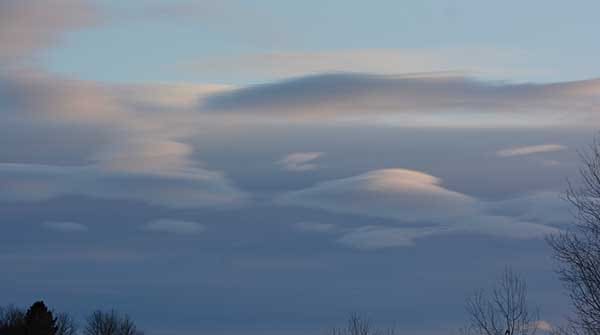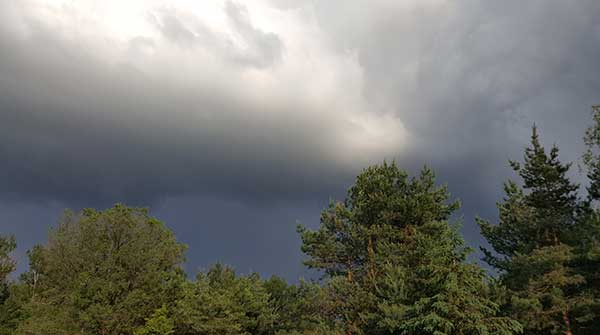Capturing the rainfalls from Atmospheric River storms could help replenish depleted aquifers
 I usually read fiction just to relax and enjoy, and I seldom think I might learn from someone else’s fantasies. But then I read Linda Davies’ book ARk Storm. It was a good read with interesting characters and a plot involving the manipulation of rainfall for evil purposes using ionization technology.
I usually read fiction just to relax and enjoy, and I seldom think I might learn from someone else’s fantasies. But then I read Linda Davies’ book ARk Storm. It was a good read with interesting characters and a plot involving the manipulation of rainfall for evil purposes using ionization technology.
Of course, there is a suite of bad guys and a nefarious plot! After finishing the book, I wondered if ARk storms might be real, as I’d never heard of them before. It turns out they are!
So let’s look at these phenomena and see what they’re all about.
AR (Atmospheric River) storms are classified into five types, with the ARk (Atmospheric River 1000) being the most severe. It is a huge and devastating series of successive storms that arise from complex influences in the upper atmosphere, often over the Pacific and Indian Oceans. They concentrate massive volumes of water in the form of ‘rivers’ that transport the water through the atmosphere, causing severe and extensive damage over large areas as they eventually release their load. They are also known as the Pineapple Express, tropical/moisture plumes or connections, and water vapour surges.
 |
| Related Stories |
| How do birds stay warm in winter?
|
| How to be eco-friendly when mowing your lawn
|
| A watershed moment – rethinking our relationship with water
|
In 2010 the U.S. Geological Service (USGS) simulated a massive ARk storm through computer modelling and predicted such a storm could cause $725 billion in damages to coastal California. Looking at what’s happening in California now, it looks like the predictions have some validity!
Much of the early science these models are based on was derived from an intense storm in 1861-62 that lasted 43 days and deposited about 3.5 metres of rain on California.
According to the USGS, other ARk storms occurred in 212, 440, 603, 1029, ~1300, 1418, 1605, 1750 and 1810. On average, they occur every 100 to 200 years, so we are certainly due for one. The 1605 storm was the largest and most impactful of these based on sedimentation analysis of soils deposited by the storm.
The impact of this recently predicted storm indicates that an area about 480 x 30 km wide could be affected, with wind speeds of up to 200 km. Roads, levees, homes, crops and infrastructure will be devastated, and 1.5 million people will have to be evacuated. Scientists predict that current trends in climate change will result in more storms and increases in water-carrying capacity and stormwater runoff potential.
Will other areas be potentially impacted? Absolutely – any west coast region can be impacted by these onshore storms, including Canada. Other studies show AR storms have recently impacted Australia, Iran, Great Britain, France and Norway.
What exactly is an atmospheric river, then?
We all know that clouds can carry vast amounts of rain, so an atmospheric river is simply terminology to reference these volumes of water as they ‘flow’ through the clouds, eventually dropping their load as rainfall. The National Oceanographic and Atmospheric Administration (NOAH) states that these ‘rivers’ can carry up to 15 times the volume of the Mississippi River at any point in time and may be several thousand kilometres long.
Their impact is magnified as warming temperatures from climate change lead to greater and faster evaporation and, thus, more water in the atmospheric rivers.
Climate change is expected to increase these atmospheric rivers’ carrying capacity by 25 percent over the short term. Three such storms hit southern California in the early weeks of January 2023. Okay, that’s gloomy. But is there an upside?
Projects aimed at capturing these anomalous rainfalls can lead to benefits in the future. If some of this water that falls can be captured to recharge aquifers, a great deal of long-term good can be derived.
California is looking at ways to do exactly this. The state is planning on allowing water to collect in unused fields so that the water can slowly percolate downward. As a result, these storage fields will create vast areas of aquatic habitat for migrating and resident birds and other animals. Because the water is eventually stored in underground reservoirs, surface lands are not negatively impacted for long periods of time, and the groundwater is recharged.
Nature is an incredible guardian of the environment. I wish we heeded her wisdom more frequently!
Geoff Carpentier is a published author, expedition guide and environmental consultant. Visit Geoff on LinkedIn, Instagram and Facebook.
For interview requests, click here.
The opinions expressed by our columnists and contributors are theirs alone and do not inherently or expressly reflect the views of our publication.
© Troy Media
Troy Media is an editorial content provider to media outlets and its own hosted community news outlets across Canada.


